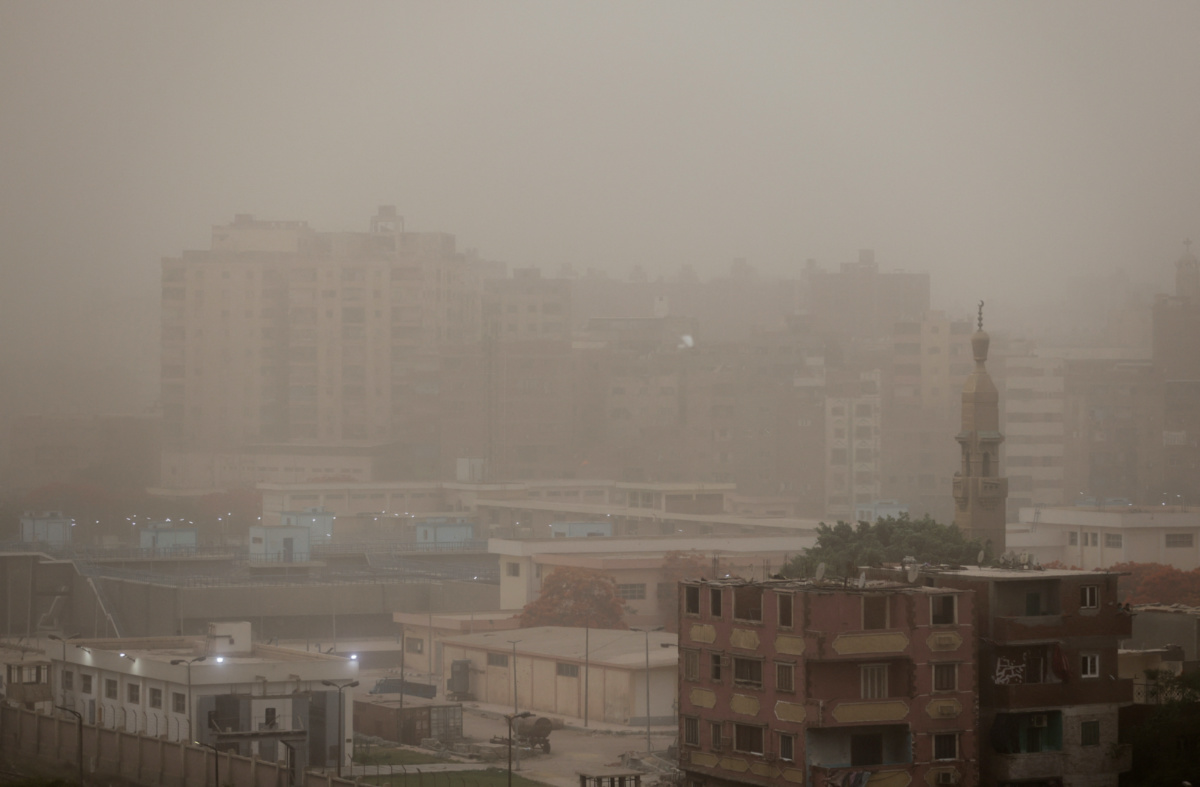Singapore
Reuters
The world is losing almost a million square kilometres of productive land a year to sand and dust storms made worse by human activities, the United Nations body in charge of fighting desertification warned on Wednesday.
The United Nations Convention to Combat Desertification (UNCCD) said an estimated two billion tons of sand and dust enters the atmosphere every year, wreaking havoc across large parts of Asia and Africa and causing significant economic damage throughout the world.

General view of buildings during a sandstorm in Cairo, Egypt, on 27th May, 2023. PICTURE: Reuters/Mohamed Abd El Ghany/File photo
In a report released during a meeting in Samarkand, Uzbekistan, to review the recent progress made in reversing land degradation, the UNCCD said at least a quarter of the storms could be attributed to human activities, including overmining and overgrazing.
Topsoil losses were not only having a material impact on food supplies in some of the world’s most vulnerable countries, but were also driving migration, impeding navigation and creating security risks, Ibrahim Thiaw, UNCCD executive secretary, told Reuters.
“It goes well beyond individuals,” he said. “It is affecting the entire community.”
The UNCCD called for better land management practices to restore damaged land and more efforts to improve early warning systems and boost resilience.
Funding efforts to combat desertification and degradation was also a major challenge, said Thiaw, noting that just $15 billion was made available over 2016-2019 to tackle problems spanning 126 countries.
He said new incentives and public funding support were required to provide incentives for the private sector to take more care of the land it uses.
Thiaw identified China as one of the success stories in combating desertification and controlling dust, with a long-term land restoration and reforestation programme helping to reduce sandstorms.
However, it remains vulnerable to sand blown in from Mongolia in the north, where overgrazing and a mining boom have left more than three quarters of the land degraded, according to a UN assessment in 2021.
With COP28 climate talks approaching, Thiaw said a sustained programme of land restoration was vital in the battle against global warming, with land use change contributing significantly to emissions.
“We are in a vicious circle, where land degradation is fueling climate change and climate change is exacerbating land loss in the world,” he said.






